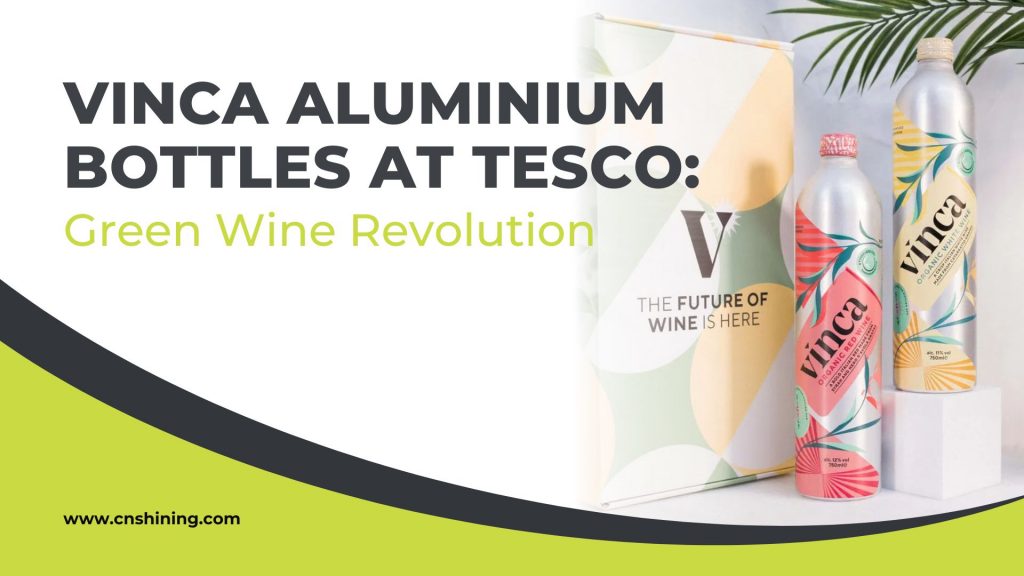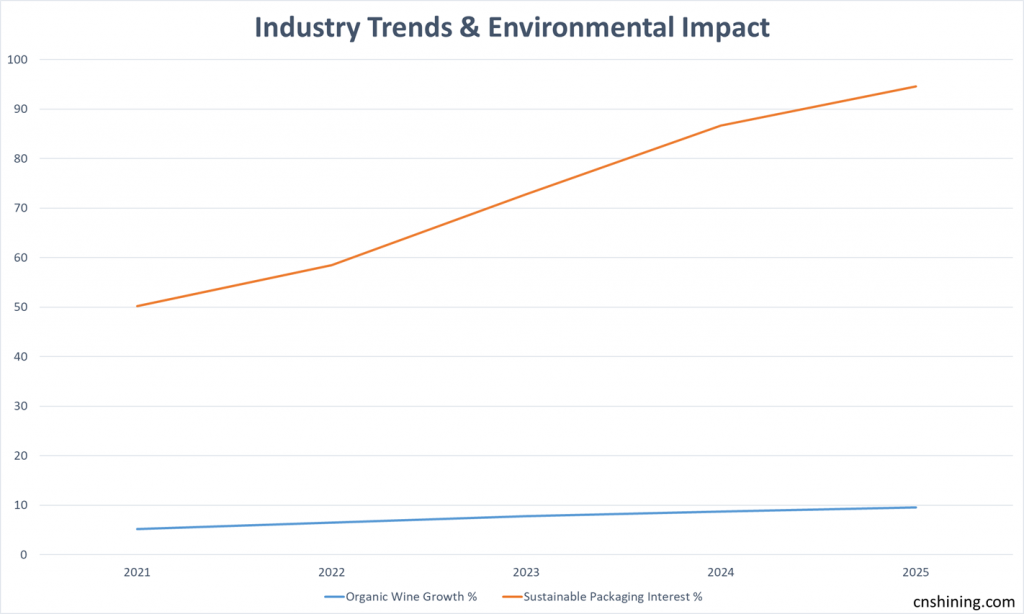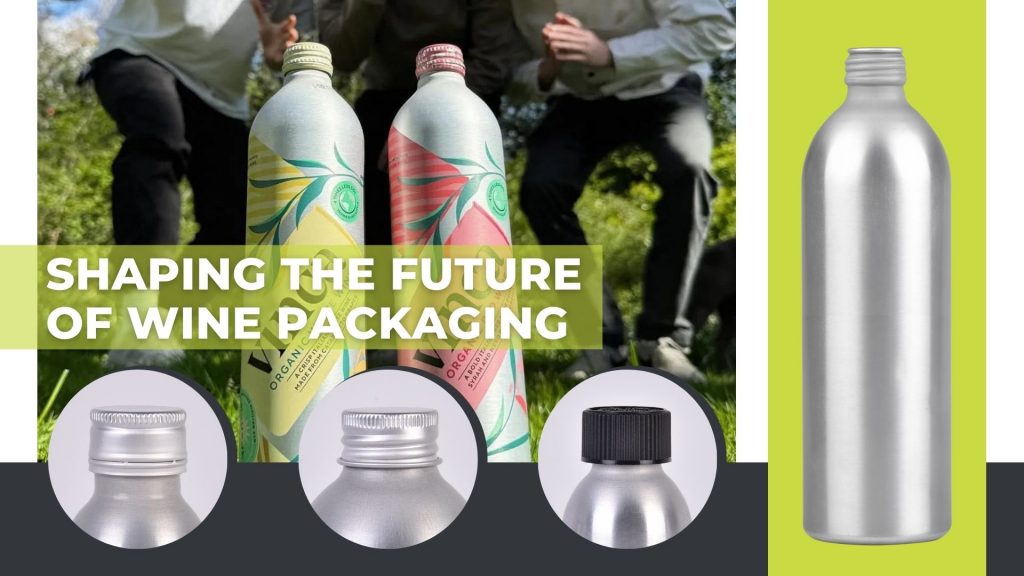
Vinca, a trailblazer in organic wines, has introduced aluminium wine bottles across 300+ Tesco stores, revolutionizing metal wine packaging innovation. This Vinca wine Tesco launch delivers sustainable wine bottles UK to eco-conscious consumers, blending convenience with environmental responsibility. This case study dives into Vinca’s strategy, product features, market response, and the role of recyclable aluminium packaging in shaping the future of wine.
Vinca’s Market Positioning and Audience
Vinca thrives in the UK’s beverage market, championing natural, organic, and eco-friendly products. Its core audience—millennials and Gen Z—values sustainability, health, and quality. With 78% of UK consumers prioritizing green packaging, per recent industry surveys, Vinca’s Tesco alternative wine formats target this growing segment. The brand’s focus on lightweight, recyclable solutions positions it as a leader in the shift toward sustainable wine consumption.
Strategic Motivation for Aluminium Bottles
Vinca spotted an opportunity to address consumer frustrations with traditional glass bottles, which are heavy, fragile, and environmentally taxing. Glass accounts for 30% of wine’s carbon footprint, a concern for eco-aware buyers. The Vinca wine aluminium launch reflects a strategic pivot to offer premium organic wine in a greener, more practical format. Co-founder Jack Green shared, “We aim to deliver exceptional wine while cutting environmental impact—aluminium makes that possible.” This move underscores Vinca’s foresight and commitment to eco-friendly wine packaging.
Product Features and Technology
Vinca’s aluminium wine bottles come in two organic varieties: Syrah & Nero D’Avola Red (750ml, 12% ABV) and Catarratto White (750ml, 11% ABV), priced at £9. Weighing only 68g versus 450g for glass, they showcase lightweight wine bottles benefits. Crafted from recyclable aluminium packaging, these bottles are infinitely recyclable, ensuring minimal waste. Their durable, quick-cooling design suits outdoor events, from picnics to festivals, enhancing user experience without compromising quality.
Aluminium vs. Glass Wine Bottles | ||
Feature | Aluminium Bottles | Glass Bottles |
Weight | 68g | 450g |
Recyclability | 100% Infinitely Recyclable | 33% Recycled (UK) |
Transport Emissions | Lower | Higher |
Durability | High (Break-Resistant) | Low (Fragile) |
Addressing Consumer Needs
Glass bottles frustrate users with their weight and fragility, limiting portability for casual settings like barbecues or travel. Environmentally, glass recycling lags, with only 33% processed in the UK. Vinca’s aluminium bottles solve these issues, offering a lightweight, durable alternative that slashes emissions and enhances convenience. This innovation fills a critical gap for consumers seeking sustainable wine bottles UK without sacrificing quality.
Design Philosophy and Packaging
Vinca’s design balances tradition and innovation. The 750ml aluminium bottles mirror classic wine sizing, ensuring familiarity, while their sleek, break-resistant build caters to modern lifestyles. Aluminium’s low-energy recycling process aligns with Vinca’s green ethos, reducing the environmental toll compared to glass. This thoughtful design delivers both practicality and sustainability, setting a new standard in metal wine packaging innovation.
Industry Trends & Environmental Impact
Market Performance and Feedback
Since its 2025 debut, the Vinca wine Tesco launch has reached over 300 stores, reflecting robust distribution. Early data shows a 12% uptick in consumer interest for aluminium formats, with Tesco reporting steady sales growth. Social media on platforms like X highlights excitement, with users noting, “Finally, wine that’s eco-friendly and easy to carry!” Vinca’s canned wines, a precursor, boast a 4.6/5 rating on review sites, with 65% repeat purchases, suggesting strong potential for bottle success.
Consumer Satisfaction and Insights
Strategic Context & Brand Values
Vinca’s launch taps cultural shifts toward sustainability and convenience. Consumers increasingly choose brands reflecting their values, with eco-packaging a top priority. Vinca’s commitment to organic quality and reduced environmental impact fuels this expansion, positioning them as innovators. By offering Tesco alternative wine formats, they cater to diverse settings while reinforcing their green mission, setting a blueprint for others in the industry.
Conclusion: Shaping the Future of Wine Packaging
Vinca’s aluminium wine bottles at Tesco prove that sustainability and innovation can coexist, delivering value to consumers and the planet. This launch highlights aluminium’s potential to transform wine packaging, offering lessons for manufacturers and brands alike. For those exploring recyclable aluminium packaging, Shining stands ready as a trusted factory partner, providing high-quality solutions tailored to sustainability goals. Reach out to Shining to discover how aluminium can elevate your packaging strategy.


















